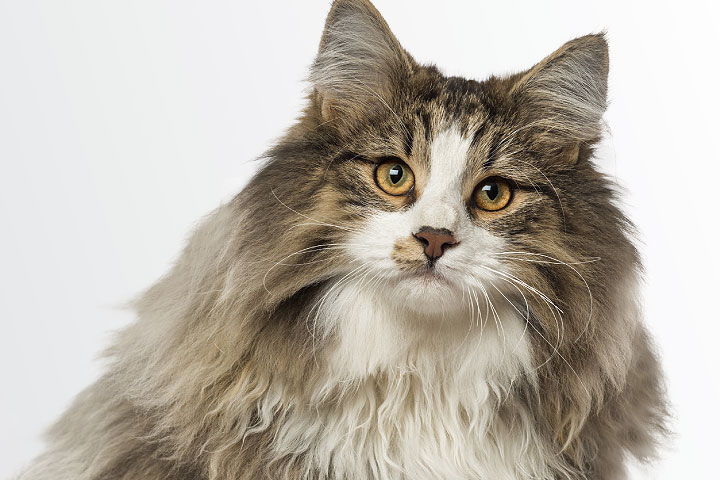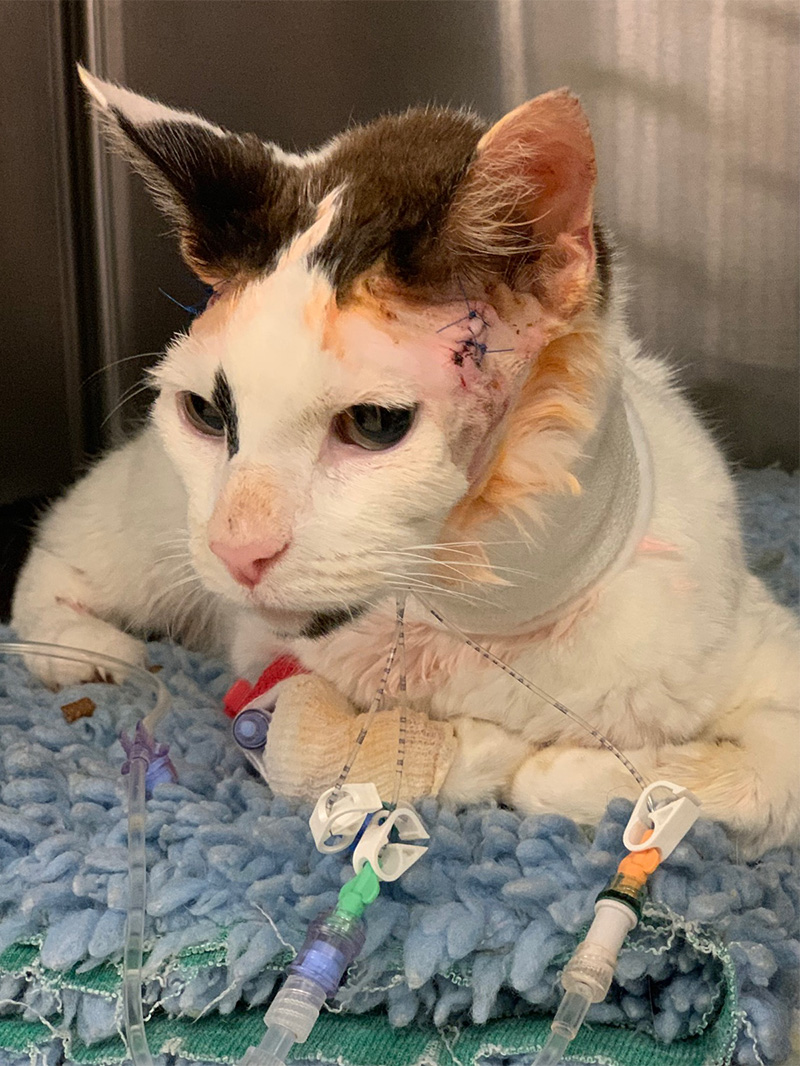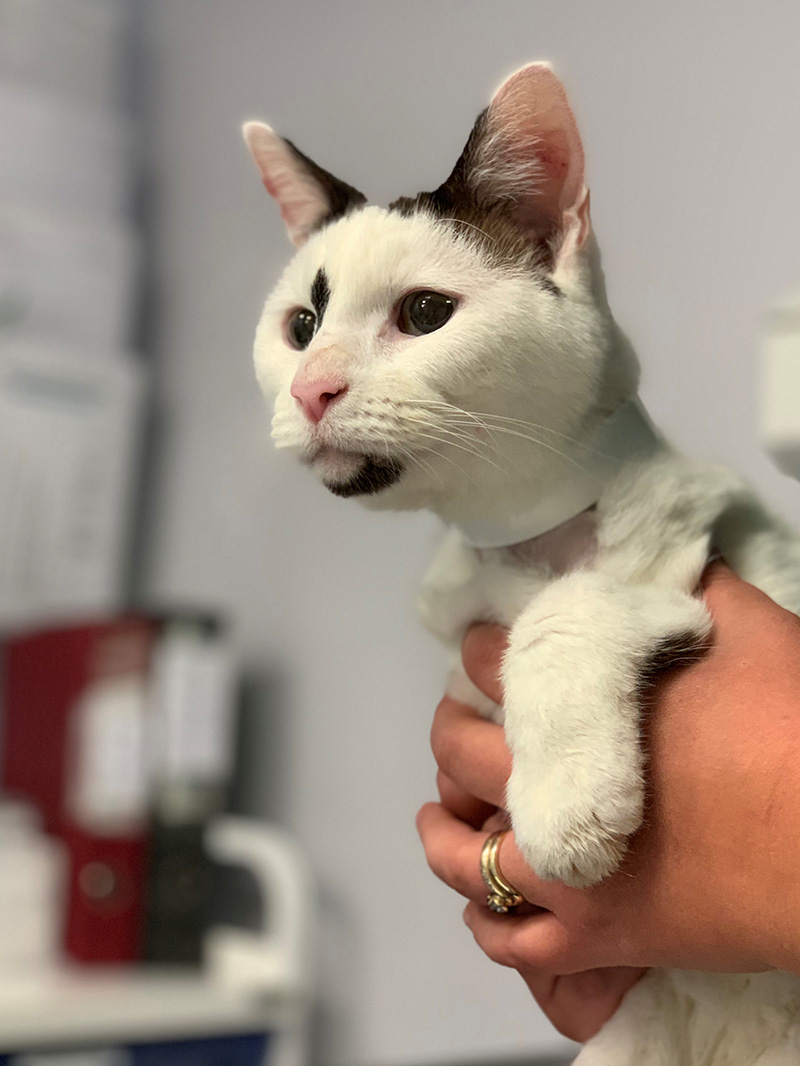acromegaly in cats uk
Recognising this syndrome in these cats will be key to successfully managing the concurrent diabetes. On the other hand with a prevalence of 261 among diabetic cats and an estimated prevalence of diabetes of 1 in 200 cats in the UK up to one and a half in 200 in the United States the overall estimated prevalence of acromegaly in the domestic cat could be significantly higher than in the human population.

Acromegaly In Cats The Veterinary Nurse
Acromegaly is a relatively rare condition caused by excessive hormone production in the brain or in mammary gland breast tissue.

. Dunning M D Lowrie C S Bexfield N H et al 2009 Exogenous insulin treatment after hypofractionated radiotherapy in cats with diabetes mellitus and acromegaly. However with increasing case experience this signalment may change. Read customer reviews find best sellers.
Acromegaly is an endocrine disease caused by a tumour in. Growth of the extremities skull and muscles occur in some cats. The disease is therefore likely currently underdiagnosed.
Affected cats can develop gradual changes in their appearance but because the disease develops over a long period of. The prevalence amongst non-diabetic cats is currently unknown although these cats would be expected to become diabetic in the long-run. Ad Enjoy low prices on earths biggest selection of books electronics home apparel more.
Prevalence of acromegaly amongst diabetic cats in North America and the UK was found to be around 1 in 4 diabetic cats seen in primary practice. Acromegaly due to excessive hormone production in the brain is more common in cats than dogs. In cats the ratio is more like ten males to one female.
More recently the UK National Institutes of Clinical Excellence guideline recommended a 10-year risk score to determine statin allocation and in this case younger patients are likely to miss out on statins simply because of their low age. Ask Your Cat Health Questions from Experts Online Now. It can occur in adult and aged cats and is usually associated with neoplasms such as functional pituitary macroadenoma of somatotropic cells.
Renee Rucinsky a board-certified. In cats it is due to GH-secreting tumors of the anterior pituitary. Just like the normal non-acromegalic diabetic cat the acromegalic diabetic cat tends to be a middle-aged to older male neutered domestic short hair.
Ad Competitively priced pet medication pet food pet supplies and more. Peak insulin dosages required to. It can be caused by excessive hormone production in the brain or in mammary gland breast tissue.
Acromegaly is a relatively rare hormonal condition. Acromegaly is an endocrine disease that leads to elevated production and secretion of growth hormone GH. Common symptoms associated with insulin resistance include weight loss despite a good appetite and increased thirst and urination.
In dogs it is usually related to an increase in se. Signs related to diabetes mellitus are typically the first clinical signs noticed. Berg R I Nelson R W Feldman E C et al 2007 Serum insulin-like growth factor-1 concentration in cats with diabetes mellitus and acromegaly.
No Appointments Ask a Cat Vet Online. Another that one in four diabetic cats in the UK is suffering from the same². The earliest clinical signs in the 14 cats included polyuria polydipsia polyphagia all of which were associated with untreated diabetes mellitus.
If the cat was previously diagnosed with. Acromegalic cats are usually presented for signs of unregulated feline diabetes. Acromegaly is most commonly seen in older 10 years old neutered male cats that have insulin-resistant diabetes mellitus.
Certified Veterinarians are Online. Acromegaly was diagnosed in 14 middle-aged to old cats of mixed breeding. Diagnosing feline acromegaly starts with a clinical suspicion based on a thorough history signalment and clinical signs.
Many of the abnormalities noted in the complete blood counts serum chemistry profiles and urinalyses of affected cats reflect concurrent diabetes mellitus. The potential of feline acromegaly providing. Cardiomegaly and azotemia develop late in the disease.
Browse discover thousands of brands. Ad Dont Bother With Crates or Transporting Your Pet. Acromegaly in cats is a condition in cats caused by excessive growth hormone in the body which is usually secondary to a pituitary tumor explains Dr.
Affected cats can develop gradual changes in their appearance but because the disease develops over a long period of time owners may not notice any problems. Thirteen 93 of the cats were male and one was female. Creates a more acidic urine helping to dissolve struvite stones.
However older male cats are more likely to be diagnosed with diabetes than females so the data may be skewed by that factor. One study has shown that one in three diabetic cats in North America suffers from acromegaly induced diabetes¹. It is more common in cats than dogs.
There is no known breed predisposition among cats. Acromegaly should be considered as a possible cause of difficult to regulate and high dose diabetic cats. In this case series female cats 61 were predisposed and Siamese cats were significantly overrepresented.
Acromegaly is caused by excess secretion of growth hormone GH in adult animals. JVIM 23 2 243-249 PubMed. All developed severe insulin resistance within a few months.
However cats of any age or sex can develop acromegaly. No single test for the diagnosis of feline acromegaly exists.

A 17 Year Old Male European Shorthair Cat At Time Of Presentation When Download Scientific Diagram

Acromegaly In Cats The Veterinary Nurse

Paws Of An Overtly Acromegalic Cat This Figure Shows A Cat With Download Scientific Diagram

Acromegaly In Cats The Veterinary Nurse

Acromegaly Insulin Resistance In Cats Diabetic Cat Care

Feline Acromegaly Endocrine System Msd Veterinary Manual

The Management Of Feline Hypersomatotropism Hs Acromegaly

Acromegaly In Cats The Veterinary Nurse

Pdf Acromegaly In A Non Diabetic Cat

Pioneering Hypophysectomy Treatment Reaches 100 Case Milestone

Acromegaly In Cats The Veterinary Nurse

Example Of A Cat Before And After Onset Of Hs Induced Changes Photo A Download Scientific Diagram

Pioneering Hypophysectomy Treatment Reaches 100 Case Milestone

Acromegaly In A Non Diabetic Cat
